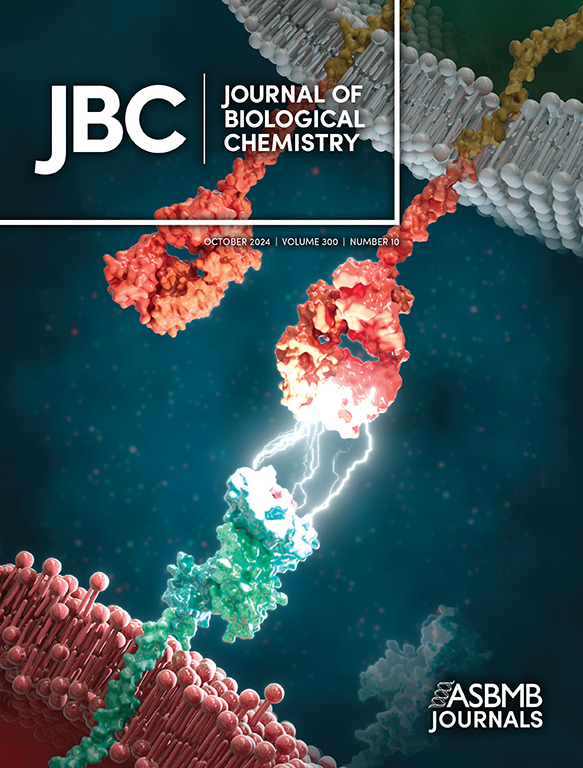Acetylation of microtubule-binding PinX1 orchestrates ribosome biogenesis to nutrient starvation via the RNA polymerase I preinitiation complex.
IF 4
2区 生物学
Q2 BIOCHEMISTRY & MOLECULAR BIOLOGY
引用次数: 0
Abstract
Shutdown of ribosome biogenesis is one of the sophisticated strategies for cells to save energy in response to nutrient starvation. However, the mechanism orchestrating ribosome biogenesis with cellular nutrition status remains unclear. Here, we identified a role of PIN2/TRF1-interacting telomerase inhibitor 1 (PinX1) in regulating ribosome biogenesis. PinX1 is highly expressed in colorectal cancers (CRC). Depletion of PinX1 impairs rDNA transcription, compromises ribosome biogenesis and inhibits tumor cells proliferation. Mechanically, associated with UBTF, PinX1 directly binds to RNA polymerase I subunit G (POLR1G) which is required for the assembly of RNA polymerase I preinitiation complex (PIC). Upon nutrient starvation, PinX1 is acetylated at K43, K133, K140, K149, K190, K222, which hinders its binding to POLR1G leading to disassembly of PIC. Collectively, our findings uncover a novel role of PinX1 and its acetylation, fine-tuning nucleolar transcription to stress signaling.微管结合PinX1的乙酰化通过RNA聚合酶I预起始复合体协调核糖体的生物发生到营养饥饿。
关闭核糖体的生物发生是细胞在营养匮乏的情况下节省能量的复杂策略之一。然而,调控核糖体生物发生与细胞营养状态的机制尚不清楚。在这里,我们确定了PIN2/ trf1相互作用的端粒酶抑制剂1 (PinX1)在调节核糖体生物发生中的作用。PinX1在结直肠癌(CRC)中高表达。PinX1的缺失会损害rDNA的转录,损害核糖体的生物发生,抑制肿瘤细胞的增殖。机械上,PinX1与UBTF相关,直接结合RNA聚合酶I亚基G (POLR1G),这是RNA聚合酶I预起始复合物(PIC)组装所必需的。在营养匮乏的情况下,PinX1在K43、K133、K140、K149、K190、K222位点发生乙酰化,从而阻碍其与POLR1G的结合,从而导致PIC的分解。总的来说,我们的发现揭示了PinX1及其乙酰化的新作用,微调核仁转录到应激信号。
本文章由计算机程序翻译,如有差异,请以英文原文为准。
求助全文
约1分钟内获得全文
求助全文
来源期刊

Journal of Biological Chemistry
Biochemistry, Genetics and Molecular Biology-Biochemistry
自引率
4.20%
发文量
1233
期刊介绍:
The Journal of Biological Chemistry welcomes high-quality science that seeks to elucidate the molecular and cellular basis of biological processes. Papers published in JBC can therefore fall under the umbrellas of not only biological chemistry, chemical biology, or biochemistry, but also allied disciplines such as biophysics, systems biology, RNA biology, immunology, microbiology, neurobiology, epigenetics, computational biology, ’omics, and many more. The outcome of our focus on papers that contribute novel and important mechanistic insights, rather than on a particular topic area, is that JBC is truly a melting pot for scientists across disciplines. In addition, JBC welcomes papers that describe methods that will help scientists push their biochemical inquiries forward and resources that will be of use to the research community.
 求助内容:
求助内容: 应助结果提醒方式:
应助结果提醒方式:


